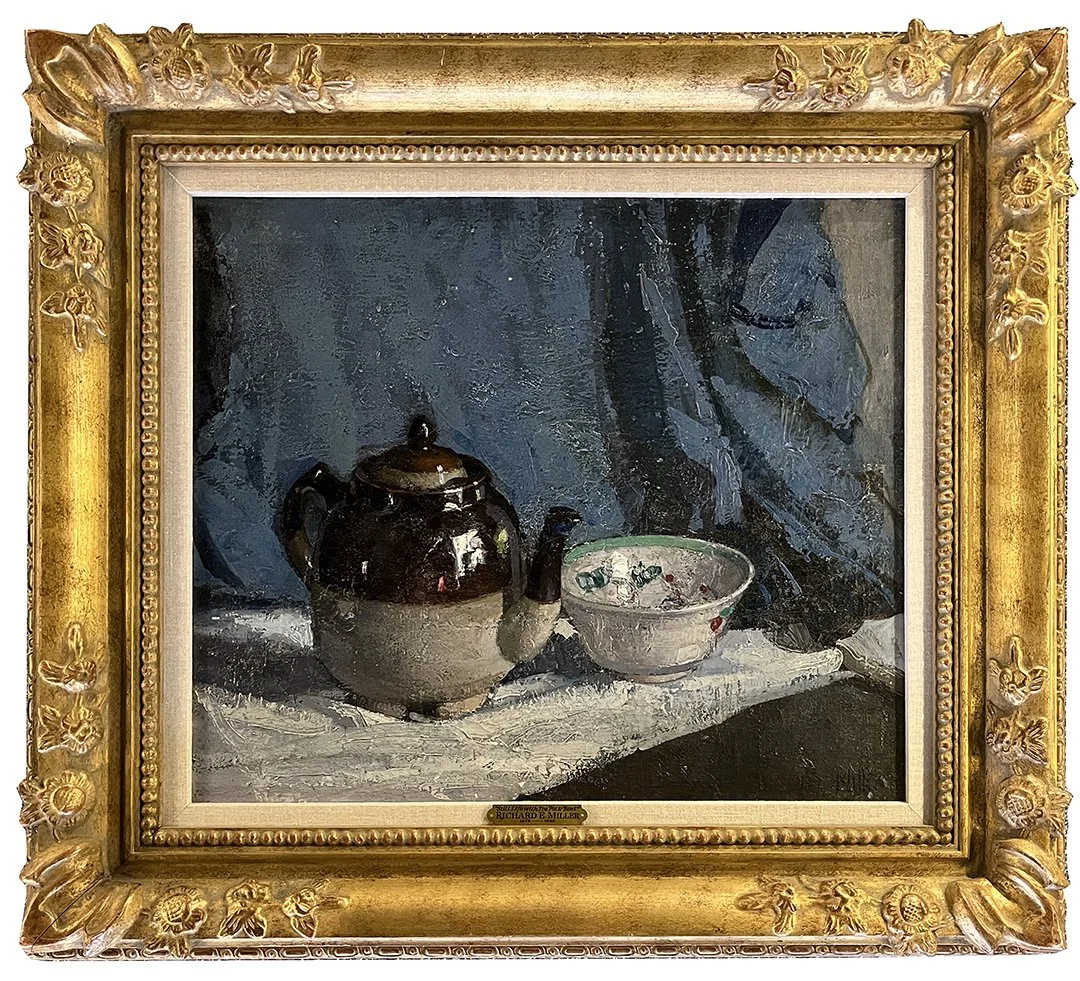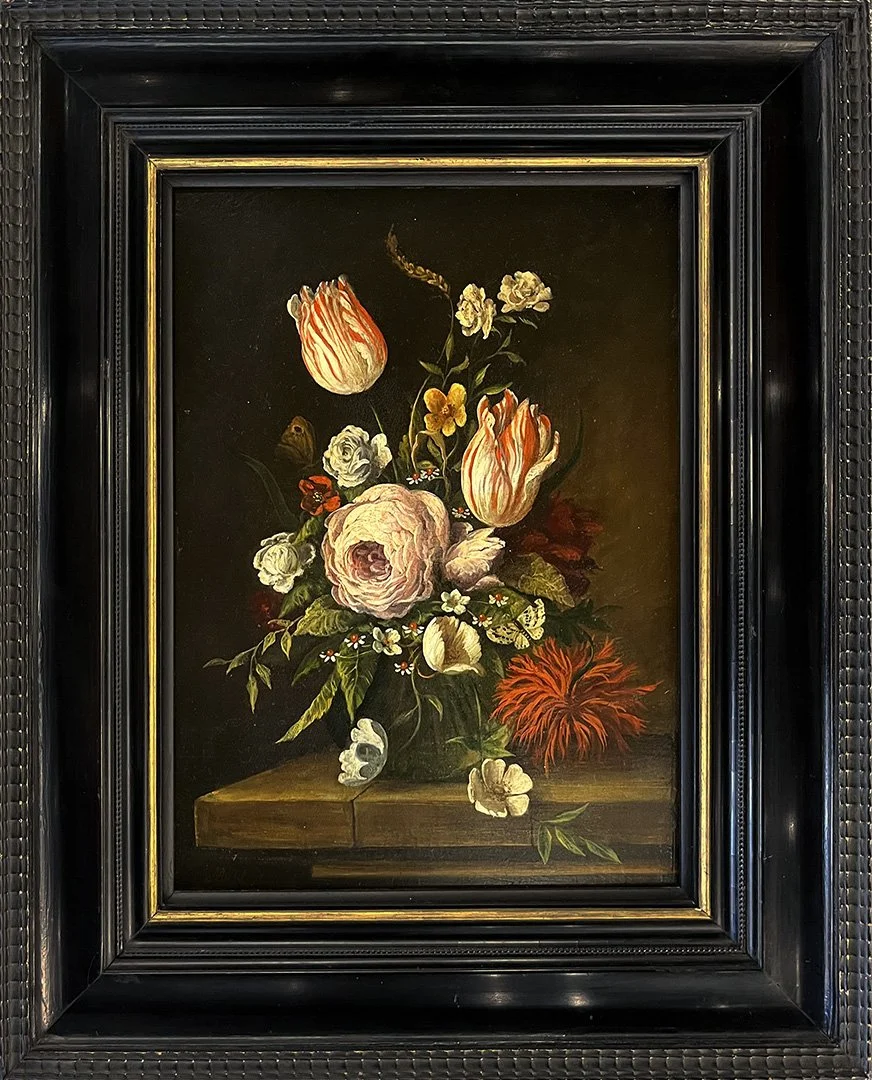Richard Miller
Richard Miller
Still Life with Teapot and Bowl
Oil on Canvas
22 x 26 inches
32 1/2 x 36 1/4 inches in the frame
Signed Lower Right
ID: DH4352
Born in St. Louis, Missouri, in 1875, at an early age Miller began to show his innate ability to draw by making portraits of his family. His formal training in art started in 1891, when he enrolled in the St. Louis School of Fine Arts' night schoo l. There he studied mostly with European-trained faculty such as Edmund Wuerpel. While still a student, Miller had his work accepted into the 1895 and 1896 St. Louis Expositions, where he was able to exhibit alongside Mary Cassatt, William Merritt Chase, James McNeill Whistler and Claude Monet.(1)
In 1897, Miller joined a group of artists who banded together to exhibit, and at the same time went to work as an artist at the St. Louis Post Dispatch.(2) In 1898, a scholarship enabled him to travel to Paris where he soon enrolled in the Académie Julien under Jean-Joseph Benjamin-Constant and Jean-Paul Laurens. By 1905, Miller's work was evolving from the conservative, academic paintings of his youth into a much more colorful and spontaneous presence, possibly gleaned from seeing the first Fauve exhibition at the Salon d'Automne and after visiting Joaquin Sorolla's first one-man show in Paris.(3) The French en plein-air painters influenced Miller strongly. He is allied with the Impressionists as draftsman, technician and colorist. Miller once stated that "art's mission is not literary, the telling of a story, but decorative, the conveying of a pleasant optical sensation," and that his pictures were meant to be hung not in public galleries but in "the modern homes, the urban apartments and the country cottage."(4)
By 1907, Miller was regularly summering in Giverny, the home of Claude Monet, with Edmund Graecen, Frederick Carl Frieseke, Guy Rose and Lawton Parker, but the proximity to Monet's great garden apparently did not inspire Miller to focus on the landscape about him.(5)
By 1910, Miller had set upon the style that he would be known best for: vigorous brushstrokes and individual color with scenes of young women, in pairs or singular, in interiors.(6) That same year he exhibited with Rose, Parker and Frieseke at the Madison Gallery in New York City, and two years later Miller had his first one-man show at the Macbeth Gallery. One critic, Clara MacChesney, felt that Miller found his "high water mark" in 1914.(7)
With the outbreak of the First World War in August of 1914, Miller was forced to leave France and return to the United States. By 1916, he had settled in Pasadena, California, where he taught at the Stickney Memorial School of Art. Two years later, he moved permanently to Provincetown, Massachusetts. At the famous art colony, he helped found, he taught art classes and concentrated on images of women in gardens, sunlit interiors and marine scenes in the Impressionist style well into the 1930s's. Miller also painted murals for the State Capitol in Jefferson City, Missouri between 1919 and 1923.





